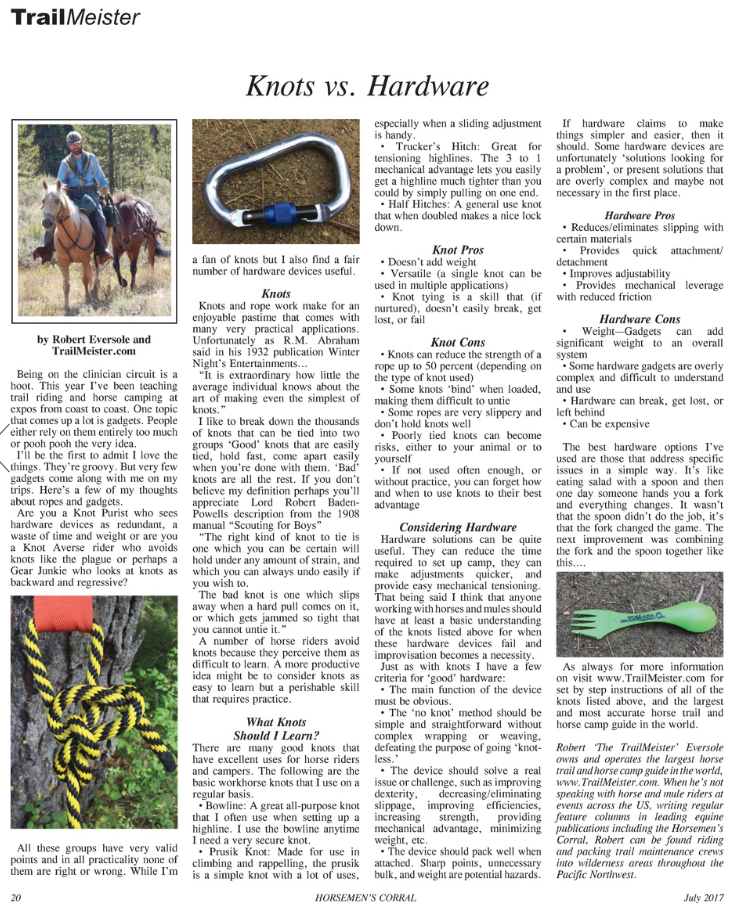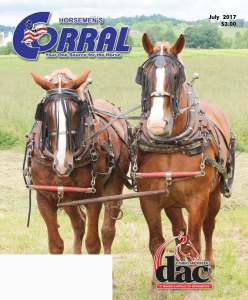 Knots vs. Hardware
Knots vs. Hardware
A TrailMeister column published in Horsemen’s Corral July 2017
Being on the clinician circuit is a hoot. This year I’ve been teaching trail riding and horse camping at expos from coast to coast. One topic that comes up a lot is gadgets. People either rely on them entirely too much or pooh pooh the very idea.
I’ll be the first to admit I love the things. They’re groovy. But very few gadgets come along with me on my trips. Here’s a few of my thoughts about ropes and gadgets.
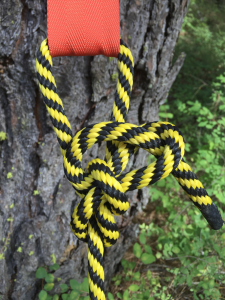 Are you a Knot Purist who sees hardware devices as redundant, a waste of time and weight or are you a Knot Averse rider who avoids knots like the plague or perhaps a Gear Junkie who looks at knots as backward and regressive?
Are you a Knot Purist who sees hardware devices as redundant, a waste of time and weight or are you a Knot Averse rider who avoids knots like the plague or perhaps a Gear Junkie who looks at knots as backward and regressive?
All these groups have very valid points and in all practicality none of them are right or wrong. While I’m a fan of knots but I also find a fair number of hardware devices useful.
On Knots – Knots and rope work make for an enjoyable pastime that comes with many very practical applications. Unfortunately as R.M. Abraham said in his 1932 publication Winter Night’s Entertainments…
“It is extraordinary how little the average individual knows about the art of making even the simplest of knots.”
I like to break down the thousands of knots that can be tied into two groups “Good” knots that are easily tied, hold fast, come apart easily when you’re done with them. “Bad” knots are all the rest. If you don’t believe my definition perhaps you’ll appreciate Lord Robert Baden-Powells description from the 1908 manual “Scouting for Boys”
“The right kind of knot to tie is one which you can be certain will hold under any amount of strain, and which you can always undo easily if you wish to.
The bad knot is one which slips away when a hard pull comes on it, or which gets jammed so tight that you cannot untie it.”
A number of horse riders avoid knots because they perceive them as difficult to learn. A more productive idea might to consider knots as easy to learn but a perishable skill that requires practice.
What Knots Should I Learn? There are many good knots that have excellent uses for horse riders and campers. The following are the basic workhorse knots that I use on a regular basis.
- Bowline—A great all-purpose knot that I often use when setting up a highline. I use the bowline anytime I need a very secure knot.
- Prusik knot—Made for use in climbing and rappelling, the prusik is a simple knot with a lot of uses, especially when a sliding adjustment is handy.
- Trucker’s hitch—Great for tensioning highlines. The 3 to 1 mechanical advantage lets you easily get a highline much tighter than you could by simply pulling on one end.
- Half Hitches – A general use knot that when doubled makes a nice lock down.
Knot Pros
- Doesn’t add weight
- Versatile (a single knot can be used in multiple applications)
- Knot tying is a skill that (if nurtured), doesn’t easily break, get lost, or fail
Knot Cons
- Knots can reduce the strength of a rope up to 50% (depending on the type of knot used)
- Some knots “bind” when loaded, making them difficult to untie
- Some ropes are very slippery and don’t hold knots well
- Poorly tied knots can become risks, either to your animal or to yourself
- If not used often enough, or without practice, you can forget how and when to use knots to their best advantage
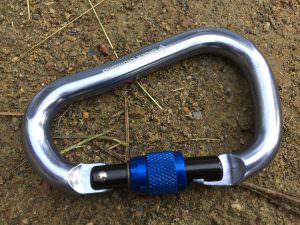 Considering Hardware – Hardware solutions can be quite useful. They can reduce the time required to set up camp, they can make adjustments quicker, and provide easy mechanical tensioning. That being said I think that anyone working with horses and mules should have at least a basic understanding of the knots listed above for when these hardware devices fail and improvisation becomes a necessity.
Considering Hardware – Hardware solutions can be quite useful. They can reduce the time required to set up camp, they can make adjustments quicker, and provide easy mechanical tensioning. That being said I think that anyone working with horses and mules should have at least a basic understanding of the knots listed above for when these hardware devices fail and improvisation becomes a necessity.
Just as with knots I have a few criteria for “good” hardware:
- The main function of the device must be obvious.
- The “no knot” method should be simple and straightforward without complex wrapping or weaving, defeating the purpose of going “knot-less.”
- The device should solve a real issue or challenge, such as improving dexterity, decreasing/eliminating slippage, improving efficiencies, increasing strength, providing mechanical advantage, minimizing weight, etc.
- The device should pack well when attached. Sharp points, unnecessary bulk, and weight are potential hazards.
If hardware claims to make things simpler and easier, then it should. Some hardware devices are unfortunately “solutions looking for a problem”, or present solutions that are overly complex and maybe not necessary in the first place.
Hardware Pros
- Reduces/eliminates slipping with certain materials
- Provides quick attachment/detachment
- Improves adjustability
- Provides mechanical leverage with reduced friction
Hardware Cons
- Weight – Gadgets can add significant weight to an overall system
- Some hardware gadgets are overly complex and difficult to understand and use
- Hardware can break, get lost, or left behind
- Can be expensive
The best hardware options I’ve used are those that address specific issues in a simple way. It’s like eating salad with a spoon and then one day someone hands you a fork and everything changes. It wasn’t that the spoon didn’t do the job, it’s that the fork changed the game. The next improvement was combining the fork and the spoon together like this….
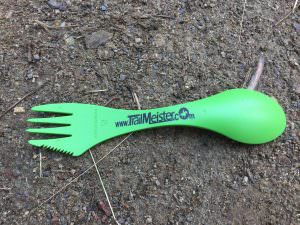
As always for more information on visit www.TrailMeister.com for set by step instructions of all of the knots listed above, and the largest and most accurate horse trail and horse camp guide in the world.


